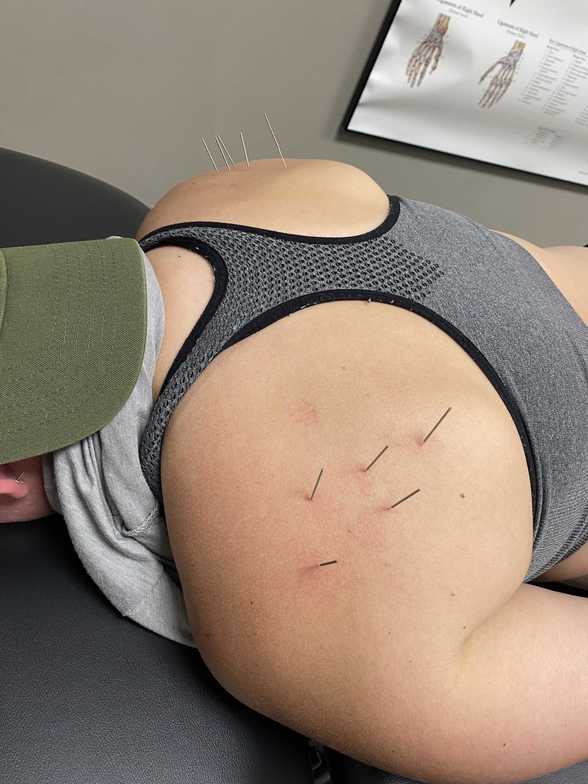
You may be familiar with trigger points if you've experienced persistent muscle pain or tension.
These small, tight knots within muscle fibers can cause discomfort and restrict movement.
Trigger point therapy is part of our overall assessment and treatment, and it actually gives a lot of information about the dysfunction and why someone may be experiencing pain or injury.
In this blog, we will dive into what trigger points are, what they mean, and how we treat them at Skare Spine & Performance.
What are trigger points?
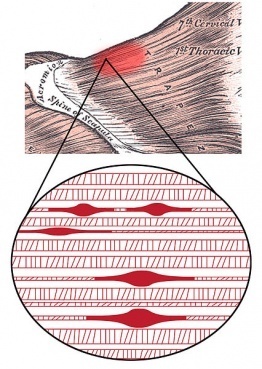
According to the Mayo Clinic, "A trigger point is a local band of tight, irritable and dysfunctional muscle tissue. This often emerges because of injury, overuse or poor movement patterns. Trigger points can disrupt your muscle function, restrict your range of motion or cause pain and tenderness.”
Essentially, trigger points are knots in muscles that can be tender, tight, and even refer pain.

They can be painful and persistent, making them frustrating!
What causes trigger points?
Trigger points form as a result of dysfunction in the muscle.
But what causes the dysfunction?
The interesting thing about trigger points is that they are actually formed and held in the brain. This means that the brain senses dysfunction in a muscle or around a joint and creates a trigger point.
Sensing this dysfunction, it contracts part of muscle fibers creating a trigger point. This trigger point now acts as a protective mechanism to help restrict and prevent that muscle's full range of motion. The body is trying to protect the surrounding joint from too much range of motion being expressed.
A great example is the shoulder joint. If the brain senses instability around the shoulder, it will create trigger points in all the muscles that move your shoulder to protect it.
Another example is in the muscles around the head. If we are constantly clenching our teeth or holding tension around our jaw, trigger points can form from the excess tension, causing headaches and migraines.
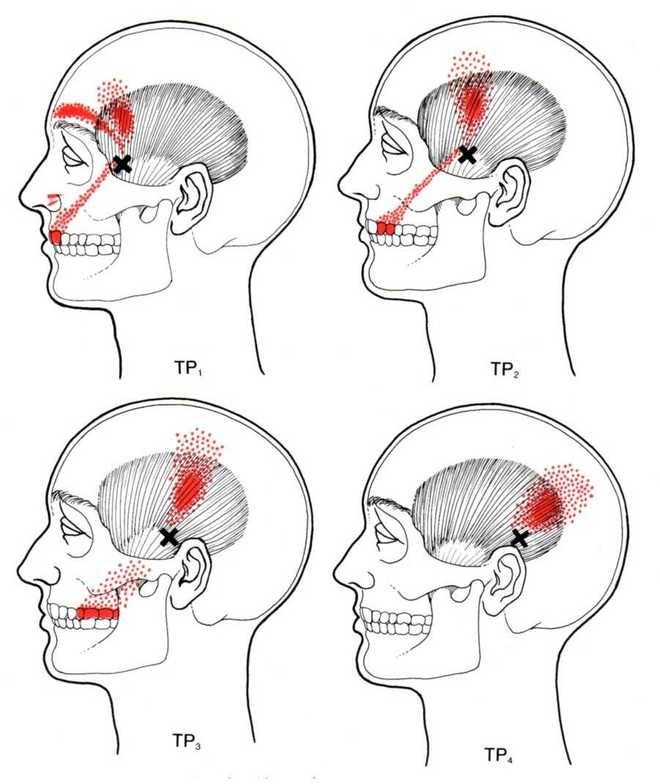
Trigger points develop due to the brain and nervous system holding tension to help protect the muscle from moving a joint past a range of motion that it can’t handle because of a lack of proper stabilization around that joint.
Essentially, trigger points are trying to protect a muscle or joint, which has the consequence of restricting range of motion and causing pain.
Trigger Point Treatment at Skare Spine & Performance:
There are several different ways trigger points can be released.
One of the easiest and most effective ways is through dry needling. When a trigger point is dry-needled, it can decrease muscle tightness, increases blood flow, and reduce pain.
We can also work to release trigger points with manual release techniques, fascial manipulation, or using a tool.
Once a trigger point is released, it's crucial to apply rehabilitation exercises, often through Dynamic Neuromuscular Stabilization (DNS), to get the muscle functioning properly so the brain can release the tension and keep the trigger point from returning.
Remember that trigger points form from the brain sensing instability and that it needs to restrict the range of motion. Effective rehabilitation is important because it will help increase stabilization around the targeted joint and prevent the trigger points from returning.
Common Conditions that Develop Trigger Points:
Headaches: As mentioned above, trigger points are commonly present in headaches and migraines. They can form from excess tension from clenching your jaw, whiplash, improper breathing mechanics, or prolonged poor posture.
Shoulder Pain: Muscles around the shoulder, like the pectoralis, upper trapezius, or rotator cuff muscles, commonly develop trigger points and can cause pain and dysfunction around the shoulder. These are muscles that are commonly sore or injured. The shoulder is the second most unstable joint in the body, so it is a typical joint that develops trigger points for the body to stabilize it.
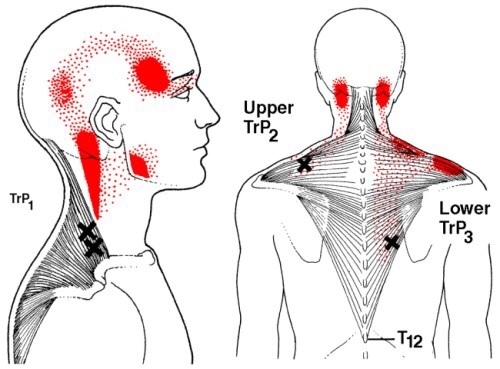
Hip Pain: The hip has many muscles around it, and trigger points can form if there is any overactivation or instability of certain muscle groups. The hip flexor, piriformis, and glute muscles are common muscles where trigger points can develop. Trigger points in the hip musculature can refer pain down your leg.
Knee Pain: The knee is a common joint where instability can occur. Trigger points around the knee can result in persistent knee pain.
Low Back Pain: Low back pain is common, and often, trigger points develop in the low back musculature and also in muscles around the hips and core musculature. Low back pain often results from improper use and stabilization of core musculature, causing there to be excess tension and trigger points in the lower back muscles.
Neck Pain: The neck muscles are notorious for holding tension, often in the form of trigger points. Trigger points can refer pain to what the picture's red area shows. This is a great example of showing that where someone feels pain is not always what's causing it.
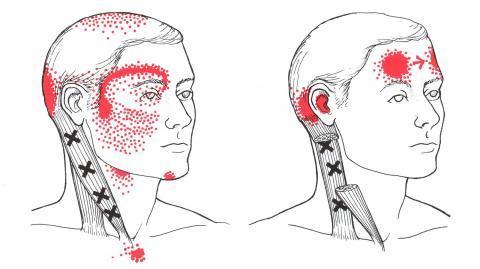
Trigger points can give us a lot of information about what is causing pain or injury and where the dysfunction is coming from. They are one part of our assessment and treatment, but they are a crucial piece.
If you are dealing with any of these conditions or think trigger points may be impacting any pain or injury you have, please reach out to us at Skare Spine & Performance.

Nate Skare
Contact Me



